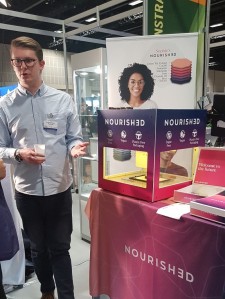IDTechEx Reports on the Weird and Wonderful World of 3D Printing

BOSTON, November 11, 2019 (Newswire.com) - 3D printing has been touted as being a manufacturing cure-all for a whole host of different applications. The reality is very different, but this doesn’t stop the onslaught of news articles proclaiming 3D printing to be the answer. Here’s a roundup of the weird and wonderful world of 3D printing in 2019.
3D printing: the cure for baldness?
US dermatologists at Columbia University have used 3D printing to try to find a solution for a common but often overlooked complaint: baldness. Finding a cure for this pervasive medical condition remains elusive, in part because of the difficulty encountered when researchers try to culture hair follicles in the lab to explore new treatments. Unlike mouse or rat cells taken from the base of hair follicles, human cells do not produce hair cells when cultured. As Angela Christiano, a professor of dermatology at Columbia’s Vagelos College of Physicians and Surgeons, explains, “Cells from rats and mice grow beautiful hairs, but for reasons we don’t totally understand, human cells are resistant”. As one potential solution to baldness could be culturing hair in a lab before transplantation, overcoming human cells’ sluggishness could unlock the cure.
Christiano and colleagues have enlisted the benefits of 3D printing to try to solve this challenge, as “previous fabrication techniques have been unable to create such thin projections so this work was greatly facilitated by innovations in 3D printing technology,” explained Erbil Abachi, first author on the paper published in Nature Communications. Although this process requires optimization, the team is confident that it could pave the way for new transplantation techniques – which are currently limited by the number of donor hairs – or provide a new laboratory environment for the testing and screening of drugs to treat the men and 30 million women in the United States currently affected by baldness.
Affordable chocolate 3D printers
Another application area that occasionally hits the headlines but generally stays under the radar of public consciousness is 3D printing of food, but a German startup, Print2Taste has launched a Kickstarter campaign to bring the mycusini, a chocolate 3D printer, into to homes globally. The mycusini 3D Choco has a price point of €198 and is expected to ship to backers by the end of the year. “With our many years of experience in the professional field of 3D food printing, we want to make the benefits of this amazing technology available to everybody,” said Print2Taste’s Eva Schlosser. “With mycusini, consumers will get access to the creative world of 3D Choco printing at a very attractive price.”
How does the mycusini work? Like all 3D food printers, it extrudes small amounts of chocolate in a layerwise fashion. Because the required viscosity of the extruded chocolate is very specific, the material compatible with the mycusini comes in the form of “Choco refill” cartridges that are only available from Print2Taste. In addition, the formulation differs from most chocolate as instead of cocoa butter, other vegetable fats such as coconut fat are used so that curing takes place more quickly. Both of these features may pose a significant barrier to adoption, however, Print2Taste is working on a “true” chocolate refill that uses cocoa butter.
3D printing vitamins
In a very similar vein, 3D printing can be used to create custom supplement formulations. This is the concept being developed by Remedy Health, who demonstrated their 3D printer nourish3D at the IDTechEx Show! in Berlin 2019. Remedy Health offers customers a bespoke tailor-made seven-layer gummy snack, with each layer containing a different nutritional supplement or vitamin to address any deficiencies in their diet. Customized 3D printed supplements delivered to your door on a subscription model appeals to a younger demographic who are increasingly conscious of their health, but want a solution that is tailored to their requirements, and flexible enough to change frequently as these needs evolve.
3D printing is the perfect technology to enable this, as co-founder and CEO Melissa Snover explains, “With Nourish3D, I think we have now found a very good use case for food 3D printing, which makes a better go-to-market option than what is currently readily available. The new concept actually gets people the exact nutritional supplements they want and need without any extras or wastage. It’s a sugar-free, plastic-free, vegan solution.” However, strangely enough, only buying what you need looks set to incur a significant price premium, with a rolling fee of £39.99 or annual monthly fee of £30, making this product only really suitable for the very health-conscious with significant disposable income.
Of course, 3D printing is more than the headline-grabbing applications, and IDTechEx covers the full range of different printers, materials and various use cases in their range of market research reports. For more information about all aspects of 3D printing research, visit www.IDTechEx.com/research/3D.
IDTechEx guides your strategic business decisions through its Research, Consultancy and Event products, helping you profit from emerging technologies. For more information on IDTechEx Research and Consultancy contact research@IDTechEx.com or visit www.IDTechEx.com.
Media Contact:
Jessica Abineri
Marketing Coordinator
press@IDTechEx.com
+44(0)1223 812300
Source: IDTechEx